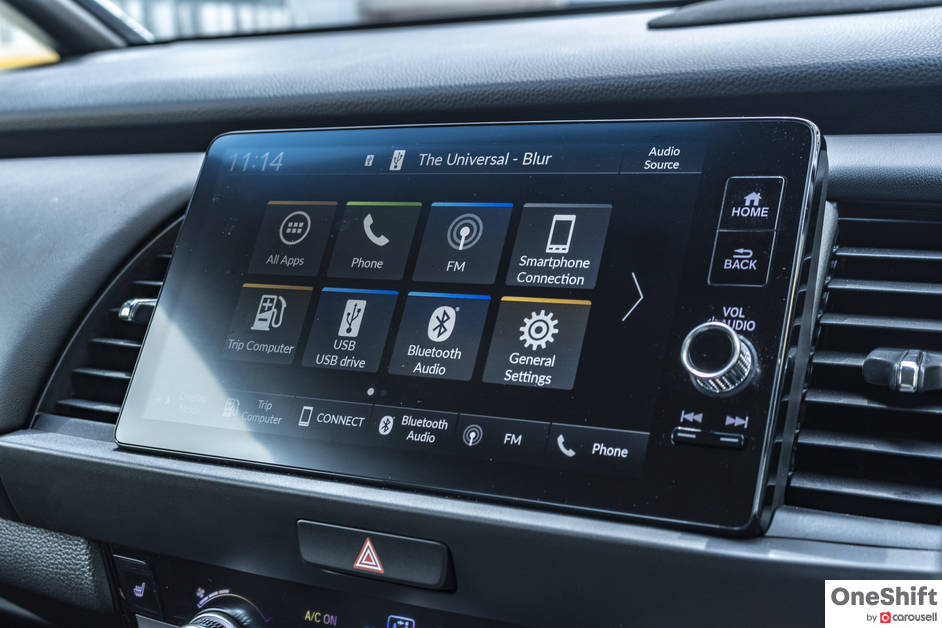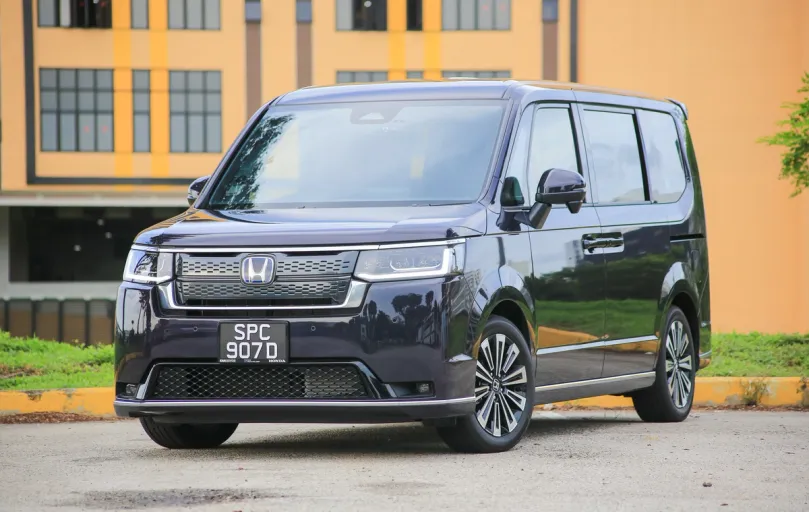Honda Jazz-E-Jazz And The Fresh Face
The fourth generation Honda Jazz carries on with this time-tested formula and now they have a hybrid drivetrain available, and this will be a reoccurring theme for their future cars.


So green is now the new black, and more automobile manufacturers are placing greater emphasis on greener cars. Electrification is now seen as the way forward, and we are beginning to see more and more vehicles with some form of electrification.

Honda has seen plenty of success with their Jazz hatchback ever since its introduction in 2002. Back then, the shiny new B Segment hatch won buyers over with its frugal engine, clever packaging and excellent cargo room. The fourth generation Honda Jazz carries on with this time-tested formula and now they have a hybrid drivetrain available, and this will be a reoccurring theme for their future cars.

The Honda Jazz has gotten bigger over the years, and even with its small footprint, it does rival in terms of interior space, cars in the C Segment category. The Jazz has short overhangs and a 2,530mm wheelbase, together with a large glass area which takes time getting used to. The windshield rake angle which matches the bonnet, is a purposeful-functional design that leaves a sense of space for front seat occupants.

The frontal styling of the Jazz, is in-line with the brand’s current design language which for their small hatchback, grows on you quite quickly. The Premium Opal White Silver Pearl colour test car was in, is by far the best looking of the eight colours available… and no... there is no yellow this round.
Honda’s eye for a quality interior is one of the features that wins buyers over, and even for the Jazz, the carry-over of material quality, fit and finish, is among the best in its segment. I like that they have even given us white-accented switchgear on the steering wheel and the gearshift surround, and I could not resist seeing if this was one of those pre-delivery protective stickers; and just like the front design of the car, these white-accented bits of trim grows on you.

The instrument panel consists of a digitised 7” TFT screen, with easy to read drive information. Another favourite touch of mine, is the adjuster knob for the air-conditioning, first seen in their City sedan, which clicks as it turns, and does emphasise heavily on quality. That cool illuminated red start button, which is also found on the City, makes its way into the Jazz.

While the Japanese tend to lag a little, compared to their European counterparts when it comes to developing a user-friendly and visually pleasant infotainment system, the one in the Jazz is among the best I have seen among Asian brands. The infotainment unit which gets a decently-sized 8” screen that does not overwhelm the dashboard, supports both Apple CarPlay and Android Auto. I would have been happy if Honda had provided us with a wireless charging pad. Other than this shortcoming, I am truly impressed with how the dashboard is built.

Like the previous generation Honda Jazz cars, interior packaging has always been part of the design brief, and even with its small footprint, there is ample room for four adults, though rear passengers will have limited space to slip their feet under the front seats, since there the floorboard rises there to accommodate the fuel tank underneath; a little design decision which was made to accommodate the car’s signature “ULTRA” rear seats. And with the flexible rear seat design, together with the Jazz’s tall roof, allows you to load anything, from longer objects with the front seat folded back, bulky items with the rear seats folded down, and even taller stuff like potted plants, with the rear seat bases folded upward.

Without folding the rear seats the Jazz hybrid has 284 litres of boot space available (20 litres less than the non-hybrid variants), slightly beating the 264 litres offered by the Suzuki Swift, but loses to the the 340 litres on the NIssan Note, 355 litres offered by the SEAT Ibiza, and is beaten almost twice over by the larger (but still somewhat B Segment) Skoda Scala; the last two cars having no form of electrification, but have quite excellent fuel efficiency numbers.


There are two powertrains available. Both are 1.5 litre units, two variants are powered by just the engine, while the 1.5 litre on this car, is coupled with an electric drive system. For those who are new to cars which are electrified, the Jazz accelerates smoothly and silently, while you capitalise on the motor’s 253Nm to get off the line a little quicker, or to accelerate out of corners briskly. The engine itself produces 72hp and 127Nm, less than the non-hybrid Jazz variants, but with the electric drive assistance, the Jazz effortlessly delivers anything north of 20km/l, which is very very good.

If you are heavy-footed like I am, you will find that the engine does get very vocal, in trying to increase the pace, and the CVT begins to “step” through its imaginary gears. When the engine starts up on the run, it is noticeable, but muted enough that it does not ruin the pleasurable drive the small hatchback delivers. Vibrations are also minimal, thanks to the superior balance that the Jazz’s four-cylinder gives, as compared to the three-cylinder found on the Nissan Note.

Overall the Jazz rides well over most road surfaces with a refinement that is difficult to match in its class, but due to the nature of the torsion beam rear suspension, the hatch does not like prolonged rough patches, as the rear will tend to skip over them.

The Honda Sensing suite of safety and convenience equipment adds makes for a safer and easier drive. Features like Adaptive Cruise Control are ideal for our local driving conditions where road speed is often varied; while the same system works as the car’s Collision Mitigation Braking System, helping to alert the driver of a possible collision scenario, and will even apply the brakes to reduce any damage from impact that may happen.
The Jazz is easy to drive, fuss free and among the best Asian B Segment hatches that you can probably buy today.

There are three main variants, the Base which explains itself, the middle of the road Home model with more kit, and this one, the e:HEV. The Base model starts from $100,999*, while the hybrid is priced at $7,000 more. If you are just getting your foot in the door, because you do really like the car, the Base model is pretty good for what it offers, but $7,000 gives you more kit, economy and refinement... and we would choose the latter.

*Price accurate on 29 July 2021
Credits: Words and Photos by Clifford Chow








Get the Best Price for your used car
from 500+ dealers in 24 hours

- Convenient and Hassle-Free
- Consumer Protection
Transparent Process
With No Obligation







